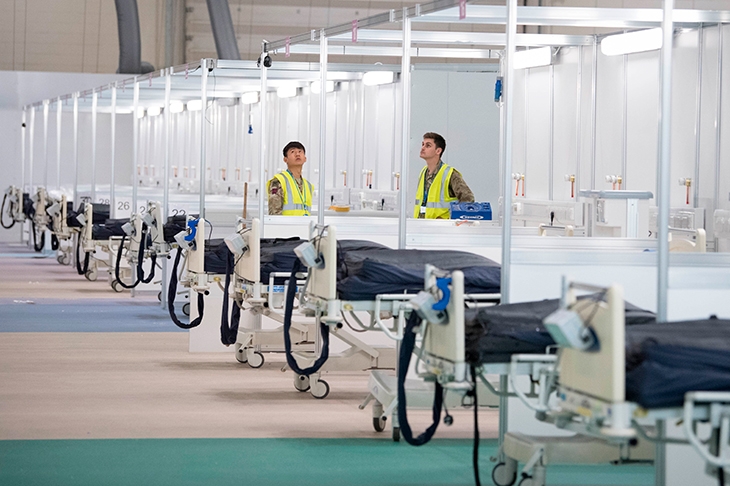The speed with which ‘model’ Nightingale hospitals have been designed and erected across the UK reminds one of the experts in this sort of thing: the Romans. Legionary fortresses provide a good example. All were designed on roughly the same pattern, and all had a hospital (valetudinarium). The fortress built at Inchtuthil in Scotland offers a typical illustration.
Picture a quadrangle about 100 yards by 65 yards, surrounded on all four sides by a ring of ‘wards’, outside that ring a corridor, and outside that an outer ring of ‘wards’. The central corridor provides free movement round the whole block and access to both the inner and outer ring. There are 60 ‘wards’ in total, each five yards square, in groups of two, each (perhaps) with access to a latrine. Each ‘ward’ could hold five beds. The total number of potential ‘patients’ is therefore 300, the equivalent of 5 per cent of the total legionary force of 6,000. It is sited next to the baths in a peaceful part of the camp (as doctors recommended) and, importantly for sanitation, has drainage and a water supply piped from the aqueduct. The walls of the ‘wards’ facing the corridor are also double-timbered for quietness. The whole complex is served by a dedicated medical staff and junior officers i/c records and supplies (we hear of orders for medicated wine, fine woollen blankets and so on).
The point is that the Romans had been doing this for hundreds of years. Experienced legionaries working under expert supervision could build bridges, roads, siege-works, walls and aqueducts as well as military bases, whether overnight camps or permanent stone forts, to meet whatever the time schedule was. The first recorded bridge over the Rhine was built by Julius Caesar. Its precise location is unknown, but its length could have been anything from 500-1,300 feet, its width 23-30 feet, in water up to 30 feet deep. It took his 40,000 men, using local timber, ten days.
Since the NHS has proved that it can respond at speed like the Romans, it should not now be necessary to keep the Nightingales open for ever ‘just in case’.
Got something to add? Join the discussion and comment below.
Get 10 issues for just $10
Subscribe to The Spectator Australia today for the next 10 magazine issues, plus full online access, for just $10.
You might disagree with half of it, but you’ll enjoy reading all of it. Try your first month for free, then just $2 a week for the remainder of your first year.














Comments
Don't miss out
Join the conversation with other Spectator Australia readers. Subscribe to leave a comment.
SUBSCRIBEAlready a subscriber? Log in